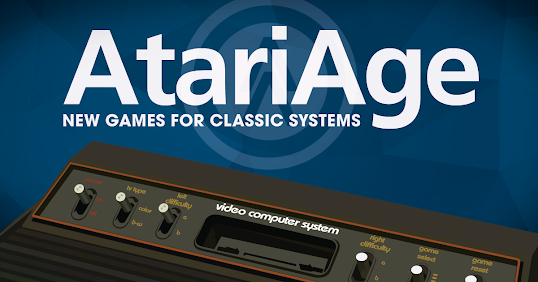In the early 1980's, during the height of popularity of the Atari 2600, many third-party companies entered the home video game market to introduce titles for the console. This influx began with the now famous Activision, which was formed by former Atari employees. (After a court settlement between the two companies, such third-party development became officially permissible). Like Activision, many of these third-party publishers were new startups, such as Imagic, Games By Apollo and SpectraVision (to name just a few). But there were also large, established companies that entered the market, opening video game divisions showcasing their own line of cartridges. And in this post, I'll be taking a look at a game from one of those companies - namely the fun title Beany Bopper from 20th Century Fox Games of the Century.
In the humorous (and perhaps a bit unnerving) 1982 "Anybody Seen Johnny?" commercial for Beany Bopper, a wide-eyed young man is transfixed by the unrelenting video game action on the TV screen in front of him, despite off-screen chatter from his parents about a telephone call, fresh apple pie, and even a new puppy. And alas, in the end, his parents find the empty chair which was the last place he was seen. As suggested by the eerie Beany Bopper music-rhyming, Johnny must have "really gotten into the game"...
The Beany Bopper screen
The craziness of that commercial notwithstanding, this Games of the Century title is in fact a fast-paced, fun, and highly addictive little game. As it states on the back of the box, in Beany Bopper "those meany beanies are buzzing the city again", and they must be stopped. You control the bopper, which is a ball that can pivot 360 degrees and fire a stun gun at the beanies. Once they are stunned, you simply need to touch them to "capture" the frown-faced menaces. But if one collides with you before being stunned, a bopper is lost. Points are earned for stunning and capturing beanies, and by collecting random objects that descend from the top to the bottom of the screen (these can also be stunned to slow their downward descent). After four beanies in a row are captured without losing a bopper, an extra bopper (life) is gained, and orange balls appear on screen which can be captured for additional points. And this gameplay all takes place on a solid-colored background where random barriers move slowly from the top of the screen to the bottom as well.
Although the gameplay, graphics and sounds in Beany Bopper are very straightforward and simple, it doesn't detract one bit from the addictive fun of playing it. In the early stages, when things are moving at a slow pace, it's easy enough to avoid the beanies, stun them, and focus on collecting the falling objects for points. But this lackadaisical pace doesn't last that long, and as things speed up it becomes a test of concentration and ultra-sharp reflexes in order to avoid the seemingly random, fast-paced beany movements (just like the commercial suggests). It's like being trapped in a room with several adversaries that move around haphazardly in no discernable pattern, making it almost impossible to develop a strategy to avoid them.
Adding to the challenge is the choice of whether to use rapid-fire (holding the joystick button down), or single shots to stun the pesky beanies. While rapid-fire is preferable in many games, in this case it results in each shot only going a very short distance before being replaced by the next, making it impossible to stun beanies far away from your bopper. But conversely, lining up the frantically moving adversaries for a single shot is also very difficult when things speed up. And that's why, despite how often I play, I've yet to settle on a single strategy of gameplay. But I do keep trying!
In short, Beany Bopper is a game with very basic Atari 2600 graphics and sound which is a ton of fun to play. Its most compelling feature is the (seemingly) randomness of the action, particularly how the beanies and orange balls move, combined with the vertically moving barriers in different shapes and sizes that continually frustrate your own movements. This randomness, especially in later levels, results in a frenzied pace which always keeps me coming back for more. Highly recommended...





























